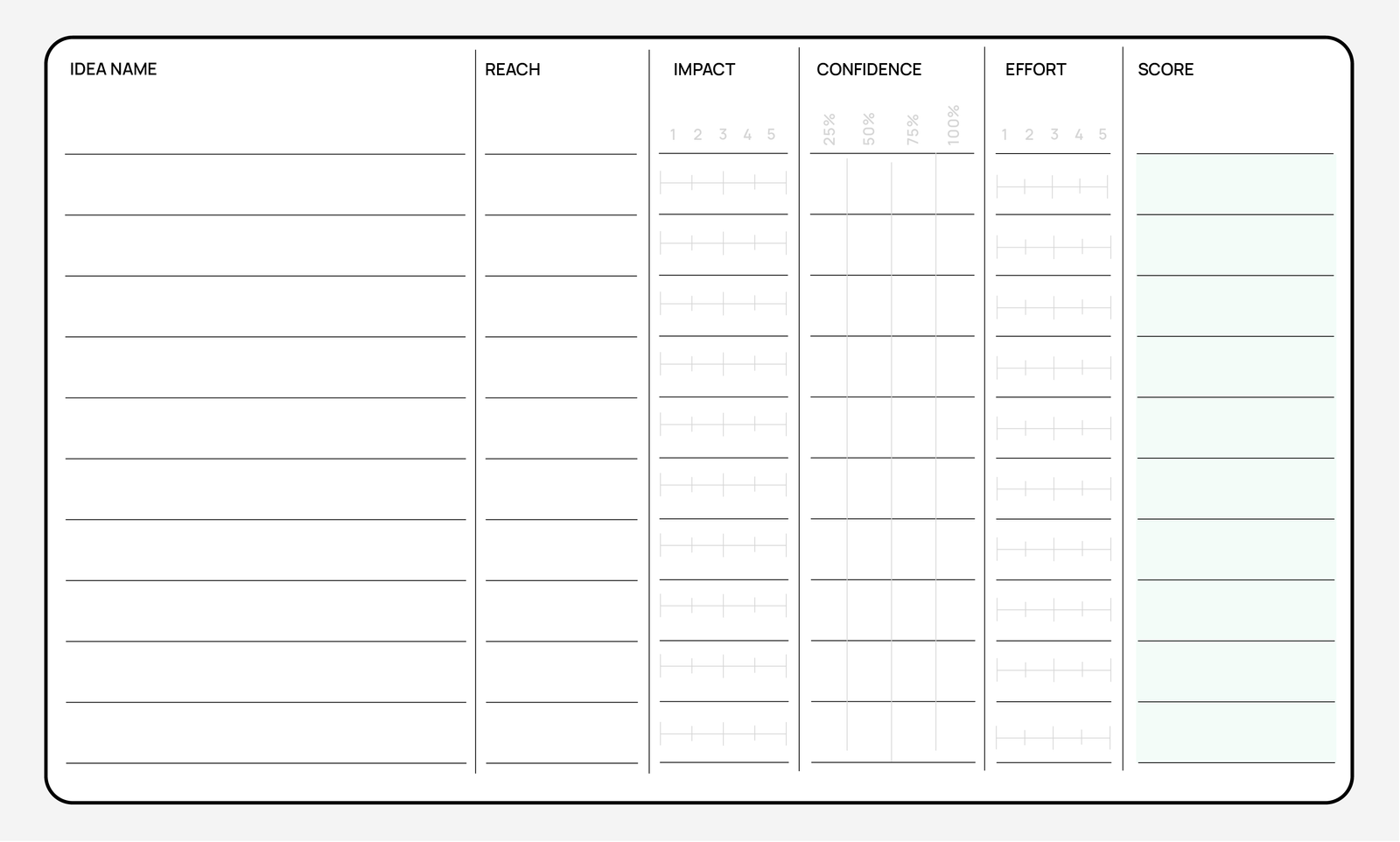RICE
RICE is a tool commonly used in product development to prioritise work based on four factors:
Reach: How many people will be positively affected by the work
Impact: The potential impact or benefit to each person affected
Confidence: The level of certainty about the reach and impact
Effort: The amount of effort required to complete the work
After scoring each initiative or feature on these four factors, a RICE score can be calculated to guide prioritisation
The results
A prioritised list of initiatives or features

When to use it
Product Management: When prioritising product features for development
Initiative Prioritisation: When evaluating and prioritising potential initiatives
Strengths
Supports objectivity
Increases focus on high-impact work
Structures the approach
Weaknesses
Can be time consuming
Potential for bias in scoring
Doesn’t consider strategy alignment
How to use it?
What do I need to start?
A list of all potential initiatives or features.
How to use it?
Who to involve?
RICE can be done alone or with a team. Consider including:
- People who have insights on each of the initiatives or features
- Representatives who can estimate effort and provide advice on feasibility
- Representatives who have insights on the potential reach and impact (such as customer facing representatives)
- People with a stake in the outcome of the prioritisation
Step by step
1
Define rating criteria
Clearly define what Reach, Impact, Confidence, and Effort mean to your organisation.
Reach is commonly a count of the customers who will use the feature or benefit from the initiative in some way
Impact is generally measured on a standard numerical scale such as 1 – 5. Add clarity on what each score means for your organisation.
For example:
1 = Minimal impact, minor improvement in user experience.
5 = Significant impact, transformative change in user behaviour or business outcomes
Confidence is generally measured as a %. Add clarity on what each score means for your organisation.
For example:
50% = Some certainty, estimates are based on limited data or assumptions
100% = High confidence, estimates are backed by robust data
Effort is generally measured on a standard numerical scale such as 1 – 5. Add clarity on what each score means for your organisation.
For example:
1 = Minimal effort, can be completed within a couple of days with 1-2 resources
5 = Significant effort, requires substantial time likely greater than three weeks with 1-2 resources
2
Score initiatives or features
Ensure participants understand each item on the list.
Score each item one-by-one, this can be done individually or as a group. Consider having each representative individually rate reach, impact, and confidence before discussing and finalising the scores together.
Once all items are scored, review them collectively to ensure their relative rankings look reasonable.
3
Calculate RICE Scores
Calculate the RICE score for each item using the formula: (Reach * Impact * Confidence) / Effort
4
Prioritise work
Reflect on the RICE scores.
Consider how each item relates to the organisations strategy and objectives.
Decide which work has the highest likely value to the organisation.
Consider road mapping to visualise priorities over time.